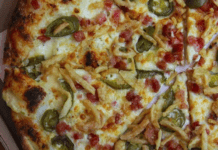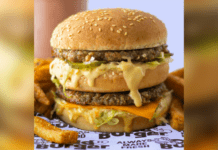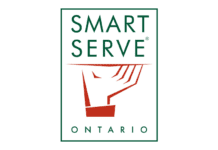Pop in and grab a newspaper and a quart of milk — and while you’re at it, you can you pick up a shawarma platter, a gyro with rice, a fattoush salad and some hummus for dinner. The convenience store at the busy intersection is doing double-duty as both snack vendor and restaurant. It’s the same with the grocery store: ready-made foods, and a wide variety of them, are increasingly obvious in their alluring presentations and wide variety of international flavours. It’s an idea whose time has come.
“I’ve always been attracted to food retail,” says Mark McEwan of Toronto’s McEwan Foods, a foodservice empire comprised of both restaurants and retail food stores — including the 22,000 sq. ft. TD Centre venue made up of 15 per cent grocery and 85 per cent prepared food. “Typically, the stimulus was European markets and fine-food stores and the lack of them generally in North America,” he adds. “So the whole idea of chef-prepared food, ready to go, seemed a natural and obvious category to go into.”
The supermarket segment is experiencing significant growth when it comes to retail meal solution (RMS) purchases, according to Technomic’s 2015 Canadian Retailer Meal Solutions Consumer Trend Report. Chef, restaurateur and food maven McEwan recognized the trend and was an early adopter of RMS. Now other businesses, from a wide range of large and small retail outlets, are following suit.
In fact, 75 per cent of surveyed consumers said they purchase a retail meal monthly; for millennials, that figure jumps to 88 per cent. The numbers also speak to growth, according to Anne Mills, manager, Consumer Insights at Technomic. In 2015, she says RMS grew by 3.5 per cent at grocery stores and an impressive five per cent at convenience stores.
Jiries Rabba, marketing manager for Rabba Foods, says the company’s push into the RMS business was driven by what it saw as an increased number of busier customers with a keen eye for ready-to-eat meals of good quality. “Our internal and market research indicates this growing category is due to the demand of the busy consumer. We cater to condo dwellers and busy Toronto areas where people are cooking less, but where taste and value are always important,” says Rabba.
When McEwan talked to his customers — more educated consumers who cook less at home — “they said they love to eat, but they don’t like to labour in the kitchen too long.” He says they shun standard frozen and packaged foods and the artificial additives and preservatives that hold them in suspension until they hit the microwave.
But it’s not just branded chefs and high-profile restaurateurs who are jumping on the RMS bandwagon. According to Mills, RMS is a phenomenon that reaches deeply into big box retail, where shoppers are visiting larger national brands such as Loblaws, Metro, Sobeys, 7-Eleven and Walmart, as well as regional retailers.
FLEXIBLE FOOD
While they have always been known as a go-to source for high-quality cooking ingredients, Vincenzo’s of Waterloo actually started selling prepared meals from its hot table in the late-1990s, says Carmine Caccioppoli, co-owner of the popular mid-town store. “Prepared foods have been the largest part of our growth for sure,” he says of the marché-style food business and fine grocery store. “We’ve been continuously honing what, and how, we serve our customers since we opened in our original location in 1967.” The hot table at Vincenzo’s includes chicken schnitzel on a bun ($5.49), a stuffed chicken of the day feature ($3.99), pasta of the day ($4.99) and a build-your-own salad option starting at $5.99.
RMS can offer flexibility that a restaurant may not be able to. On a McEwan hot table, for example, there might be 12 international flavours, unlike at a restaurant. “People like that diversity. It doesn’t happen in a restaurant, but when you do retail you certainly have greater flexibility to paint with a broader brush. You just have to be authentic,” he says. However, there’s a square-foot caveat, explains Rabba. “Shelf space is constantly an issue in retail,” he cautions. “Products that are most in demand will first and foremost dictate shelf space. If a category grows — let’s say take-out meals — there is only so much refrigerated space to merchandise as compared to general dry grocery, which can be put anywhere.”
According to Technomic’s RMS Trend Report, the most popular lunch and dinner items are chicken, pizza and sandwich wraps, while QSRs have captured the breakfast daypart. However, convenience stores can provide quick on-the-go foodservice that is making headway with consumers in freshness and quality. Mills, drawing from the Canadian Convenience-Store Foodservice Consumer Trend Report, says consumers “recognize the improvements retailers are making in their prepared-foods offerings, which is helping to drive sales of retailer meal solutions. For instance, 27 per cent say convenience stores have improved the quality of their foods over the past two years.”
Quality, yes, but healthy options are important for customers, too — especially when it comes to supermarkets. When asked about “better-for-you” options, 53 per cent of consumers surveyed by Technomic pegged supermarkets as better than fast-food for availability of healthier food options. Only 12 per cent said fast-food does better, while 35 per cent said they are the same. Retailers such as McEwan and Caccioppoli strive for a premium-food experience; there’s a reason for the coinage “grocerant.”
McEwan knows his customers want to eat well and stresses his stores use only natural and wholesome ingredients. Rabba offers healthier deli salads of quinoa, kale, chickpea and tabbouleh as well as “home-meal replacements” that include whole barbecued chickens and salmon along with chicken cacciatore and chicken tandoori. In Waterloo, Caccioppoli agrees that healthy is in demand. “You see the decline in fast food, but people still want the option of convenience to save themselves time,” he says. “It’s trust. They’ve bought their groceries here and they realize we’re using the same produce to make the meals. They recognize that it’s healthy and they don’t have to cook it.”
Rabba has a slightly different view of the trust issue. “I believe that is up to how each company is perceived. Whether it is grocery or fast food, customers come to you because they trust you or they come to you because they have no other choice,” but he concedes “there is probably some sort of trust more towards a grocery store over a fast-food chain due to the fact that it often resembles home cooked meals.”
Although they have shown improvement, convenience stores tend to fall behind QSRs when it comes to healthy RMS options, according to Mills. “About 49 per cent of consumers say fast food does a better job than c-stores in terms of availability of healthy options, compared to just 10 per cent who say c-stores are better. Forty-one per cent say they’re the same.” However, she says to watch for those convenience stores to be a bit of a dark horse in the RMS race, pointing to the fact that of the more than one-quarter of consumers who perceive healthier foods are available there: “Twenty-nine per cent say c-stores have improved the health of their prepared items over the last two years.” While the foodservice industry will grow 3.5 per cent on average, convenience store foodservice will hit 4.5 per cent in 2016. “C-stores are expected to outpace most other foodservice segments, save for healthcare,” Mills says.
Those numbers have increased in a relatively short span of time and “growth will likely continue,” says Mills, who anticipates retailers will boost resources and invest in developing RMS across markets generally. “It will continue to grow as it meets consumer demand for convenient, affordable and fresh meals.”
Volume 49, Number 6
Written By Andrew Coppolino

















